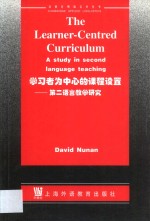
- 作 者:(美)David Nunan著
- 出 版 社:上海:上海外语教育出版社
- 出版年份:2001
- ISBN:7810802879
- 标注页数:196 页
- PDF页数:208 页
请阅读订购服务说明与试读!
订购服务说明
1、本站所有的书默认都是PDF格式,该格式图书只能阅读和打印,不能再次编辑。
2、除分上下册或者多册的情况下,一般PDF页数一定要大于标注页数才建议下单购买。【本资源208 ≥196页】
图书下载及付费说明
1、所有的电子图书为PDF格式,支持电脑、手机、平板等各类电子设备阅读;可以任意拷贝文件到不同的阅读设备里进行阅读。
2、电子图书在提交订单后一般半小时内处理完成,最晚48小时内处理完成。(非工作日购买会延迟)
3、所有的电子图书都是原书直接扫描方式制作而成。
1 Introduction 1
1.1 Preamble 1
1.2 Linguistics and Language Teaching 1
1.3 Learner-Centred Curriculum Develipment 2
1.4 The Curriculum Process 4
1.5 The Structure of the Study 8
1.6 Conclusion 9
2.1 Traditional Approaches to the Curriculum 10
2 Curriculum Processes 10
2.2 ESL and Curriculum Planning 15
2.3 Summary 20
3 Learner-Centred Curriculum Development 21
3.1 Introduction 21
3.2 Theoretical Bases for Learner-Centred Curricula 22
3.3 Communicative Language Teaching and Learner-Centred Curricula 24
3.4 Communicative Language Teaching-The Teacher's Perspective 28
3.5 The Concept of Language Proficiency 32
3.6 Towards a Generalised Language Curriculum Framework 35
3.7 The Teacher and the Curriculum 36
3.8 Summary 41
4 Pre-Course Planning Procedures 42
4.1 Introduction 42
4.2 The Starting Point 42
4.3 Needs Analysis 43
4.4 Participants Pre-Course Planning Procedures 45
4.5 Griping Learners 46
4.6 Resources for Planning 48
4.7 Investigating Needs-Analysis Procedures 51
4.8 Conclusion 52
5 Planning Content 54
5.1 Introduction 54
5.2 Content Selection-An Empirical Investigation 55
5.3 Analytical Approaches to Content Specification 57
5.4 Deriving Content from Learner Data 62
5.5 Conclusion 75
6.1 Introduction 76
6 Methodology 76
6.2 Methodology and Communicative Language Teaching 78
6.3 Acquisition in the Classroom 81
6.4 Stimulating Classroom Acquisition 84
6.5 Methodology in a Learner-Centred Curriculum 88
6.6 Negotiating Leaning Activities 95
6.7 Conclusion 97
7.1 Introduction 98
7 Resources for a Learner-Centred Curriculum 98
7.2 Materials in a Learner-Centred Curriculum 99
7.3 The Community as a Resource 105
7.4 The Teacher as Developer of Resources 108
7.5 Conclusion 115
8 Assessment and Evaluation 116
8.1 The Place of Evaluation in the Curriculum 116
8.2 Some Key Concepts in Evaluation 118
8.3 some Key Questions in Evaluation 121
8.4 The Assessment of Second-Language Proficiency 123
8.5 Techniques for Self-Assessment 130
8.6 Conclusion 134
9 Evaluation and Professional Development 136
9.1 Introduction 136
9.2 Evaluation and the Planning Process 137
9.3 Evaluation and the Implemented Curriculum 138
9.4 Evaluation and the Assessed Curriculum 142
9.5 Causes of Leaner Failure 144
9.6 Evaluation and Teacher Development 147
9.7 Conclusion 150
10 The Teacher as Curriculum Developer 151
10.1 Introduction 151
10.2 The Teacher as Curriculum Developer-A National Study 151
10.3 Future Directions 174
10.4 Conclusion 178
References 181
Appendix 187
Subject Index 191
Author Index 195
